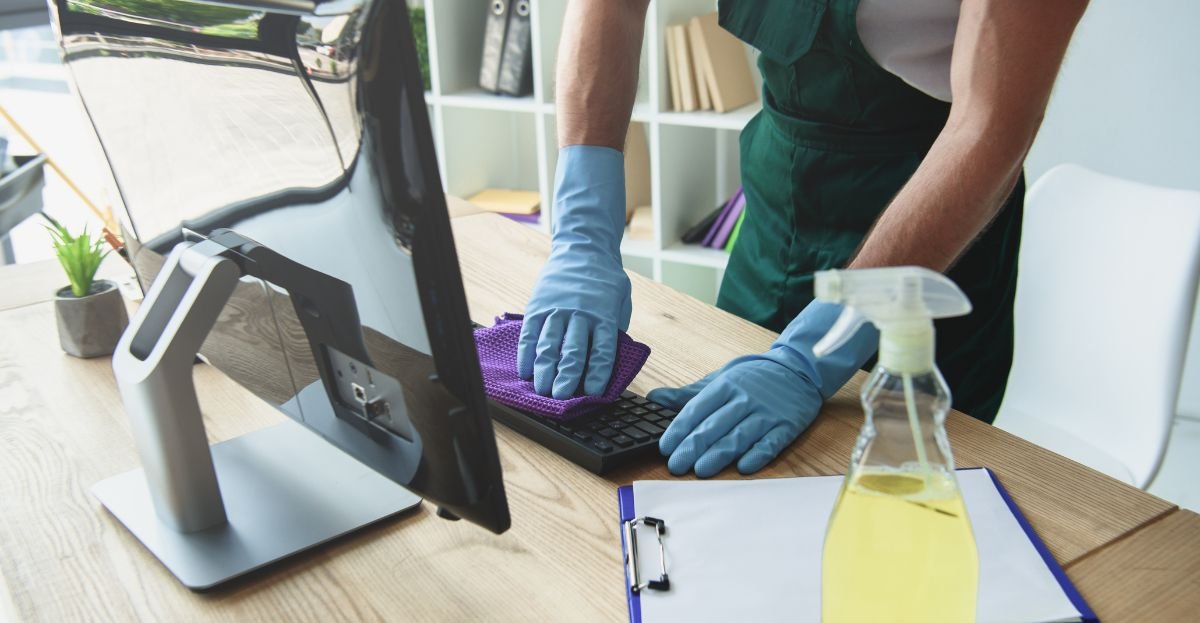The Covid pandemic was an unwelcome testament to the importance of workplace hygiene. While the pandemic is not the issue it once was, the hygiene lessons learned and the emphasis on maintaining a clean and asafe work environment remain paramount.
It is an obvious statement to say hygiene in the workplace can prevent the spread of diseases, but it goes deeper than this. Good hygiene practices can play a crucial role in employee morale, productivity, and overall well-being.
Let’s examine the importance of workplace hygiene on employee health and why it matters.
The Direct and Psychological Impact of Workplace Hygiene
There are two distinct divisions that we can look at when measuring the impact of workplace hygiene on employee health. First, there is a direct impact on employee health, but there are also psychological effects to consider.
Ultimately though, the combination of these two factors directly impacts overall employee wellbeing.
Direct Impact on Health
A lack of hygiene can lead to the rapid spread of illnesses, especially in close-knit office environments. Contaminated food, such as packaged salads, has been linked to outbreaks of foodborne illnesses like listeriosis, highlighting the need for proper hygiene in workplace kitchens and dining areas.
As a metric, the direct impact of workplace hygiene on employee health is where the most immediate and tangible effects can be observed:
- Spread of Communicable Diseases: A lack of hygiene can lead to the rapid spread of illnesses, especially in close-knit office environments.
- Allergies and Respiratory Issues: Dust, mold, and other allergens, if not regularly cleaned, can lead to respiratory problems and trigger allergies among employees.
- Skin Problems: Unclean workspaces, especially shared equipment like keyboards or phones, can harbor bacteria leading to skin infections or irritations.
Psychological Impact on Health
While the physical repercussions of workplace hygiene are evident, the psychological dimensions are equally significant – if not so immediately apparent.
- Boosted Morale and Productivity: A clean environment is invigorating and can lead to increased motivation and efficiency.
- Reduced Stress and Anxiety: Employees can focus better on their tasks without the added stress of unhygienic conditions.
- Positive Work Cultures: As highlighted in a study by HBR, positive work cultures are more productive. A clean workplace contributes to creating such a culture.
While the direct impact of poor hygiene represents the “public face” of the problem, the psychological impact is equally insidious. Poor hygiene practices can become woven into a business culture and can affect morale, productivity, job satisfaction, and ultimately – as we discuss next – profits.
The Economics of Workplace Hygiene
Related Posts
For businesses, it is all about the bottom line. We will go into the details of how good hygiene can affect profits in detail below. However, simple common sense dictates that a healthy and happy workforce is a more productive workforce.
Neglecting hygiene aspects can have immediate and long-term financial implications:
- Increased sick leave: Absenteeism through sick leave is a direct cost to businesses.
- Healthcare costs: A rise in medical claims can strain a company’s health benefits budget.
- Employee turnover: Continual health issues can lead to higher turnover rates, incurring recruitment and training expenses.
- Open-plan office risks: Open-plan offices can increase the risk of illnesses spreading, leading to more employees taking sick days.
Beyond these direct implications, factors like loss of trust, legal compliance issues, and potential damage to brand reputation further underscore the importance of maintaining workplace hygiene.
Modern Solutions for Workplace Hygiene
In the wake of the pandemic, businesses have recognized the need to adapt and innovate. Modern solutions not only address hygiene concerns but also streamline operations, enhancing both safety and efficiency.
- Touchless Access Control: One of the standout innovations has been the adoption of touchless access control. By eliminating the need for physical contact, these systems reduce the risk of germ transmission while offering seamless entry and exit experiences while improving overall security posture when integrated with technologies such from LPR cameras to visitor management systems.
- Automated Cleaning Protocols: Robotics and automation have paved the way for consistent and thorough cleaning, ensuring workspaces remain sanitized without human error.
- Air Purification Systems: Advanced air purifiers can filter out pathogens, allergens, and pollutants, creating a healthier breathing environment for employees.
- Digital Health Monitoring: Apps and wearables can monitor employee health, providing early alerts for any potential health concerns.
- Holistic Approach: A holistic approach to workplace hygiene can be part of a strategy to improve the overall health and well-being of employees.
These solutions can go a long way to ensuring a happier, healthier, and more profitable workplace.
Workplace Hygiene: Start With a Clean Slate
Prioritizing hygiene is more than just cleanliness; it’s an investment in employee health, morale, and business success. At its heart, this is a simple concept – a hygienic workplace is a healthy workplace, and a healthy workplace is a more productive workplace.
Workplace hygiene isn’t just about preventing the spread of germs – although this is an obvious benefit. It is about ensuring your employees work in a healthy, happy and productive environment.










